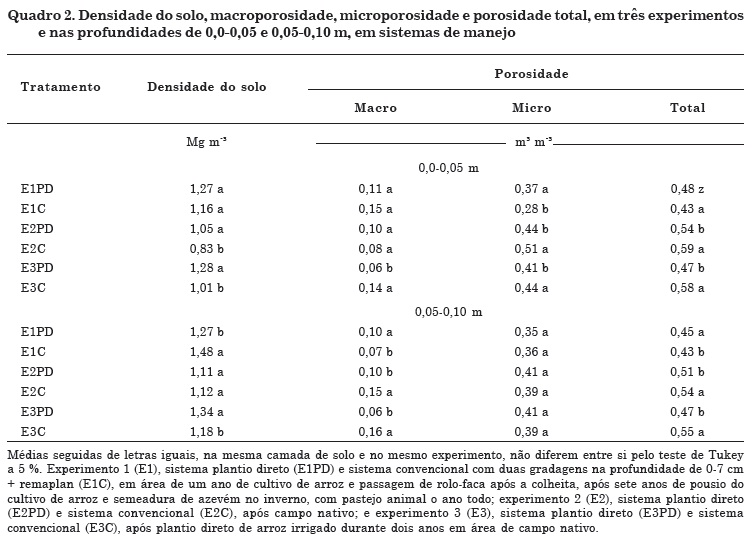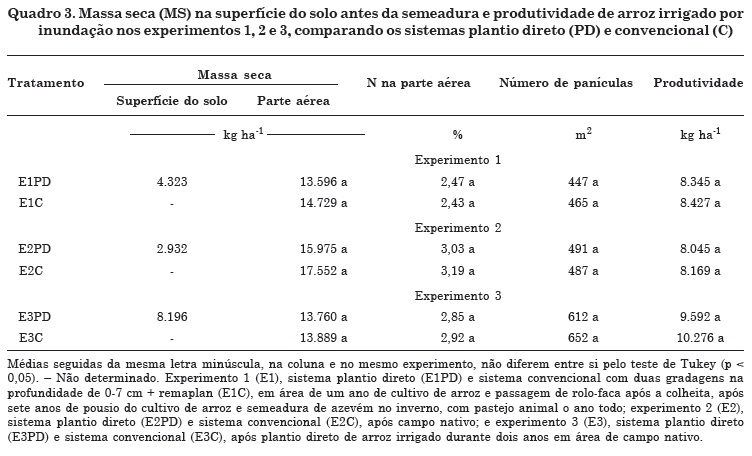The State of Rio Grande do Sul is the greatest producer of flooded rice of Brazil, concentrated mostly along the western border. The objective was to evaluate soil physical properties and flooded rice yield in no-till and conventional tillage systems and rice straw levels in no-till system. The study consisted of four experiments (E), laid out in experimental design was completely randomized blocks, with four experiments (E) and 10 repetitions in experiment 1, 2 and 3 and 6 in experiment 4. The management system in E1 consisted of no-till (E1PD) and conventional tillage with two harrowings (layer 0.0-0.07) m after levelling (E1C), on soil where rice had been gown for one year followed by seven years of fallow, with rye grass sowing in the winter and grazing all year long; E2: no-till (E2PD) and conventional tillage (E2C), after native grassland; E3: no-till (E3PD) and conventional tillage (E3C) after no-tillage rice for two years on a native grassland area; E4: four rice straw levels had been used before rice sowing. The yield of flooded rice did not differ between no-till and conventional tillage. The residual dry mass of rice before sowing did not influence the flooded rice yield.
rice straw; no-till; yield; Oryza sativa




